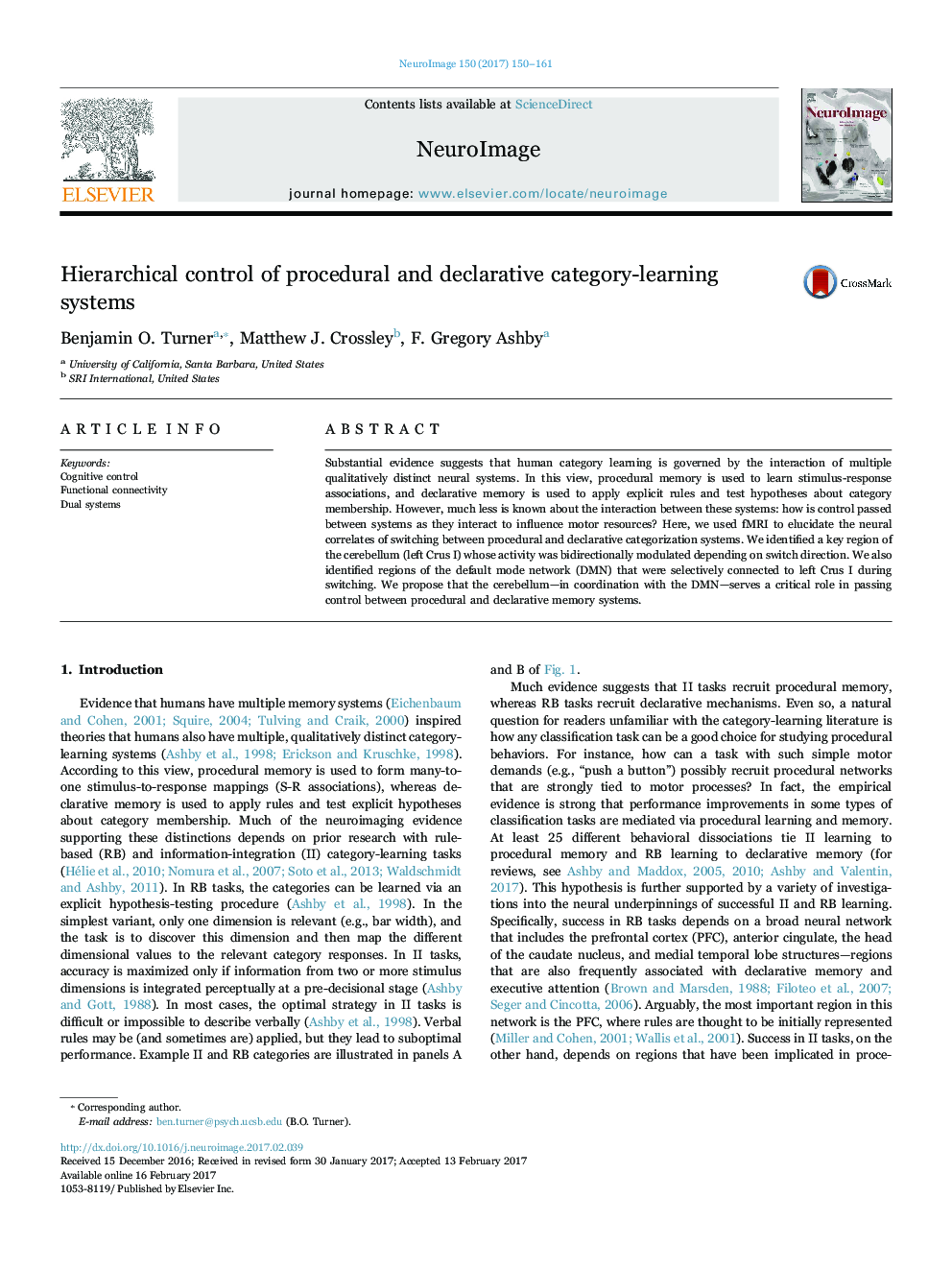| Article ID | Journal | Published Year | Pages | File Type |
|---|---|---|---|---|
| 5631632 | NeuroImage | 2017 | 12 Pages |
â¢Humans can rapidly switch between tasks relying on procedural and declarative systems.â¢Switching is associated with bidirectional activity in left Crus I of the cerebellum.â¢Left Crus I exhibits increased connectivity with canonical DMN regions when switching.â¢These results confirm and extend prior results on the roles of the cerebellum and DMN.
Substantial evidence suggests that human category learning is governed by the interaction of multiple qualitatively distinct neural systems. In this view, procedural memory is used to learn stimulus-response associations, and declarative memory is used to apply explicit rules and test hypotheses about category membership. However, much less is known about the interaction between these systems: how is control passed between systems as they interact to influence motor resources? Here, we used fMRI to elucidate the neural correlates of switching between procedural and declarative categorization systems. We identified a key region of the cerebellum (left Crus I) whose activity was bidirectionally modulated depending on switch direction. We also identified regions of the default mode network (DMN) that were selectively connected to left Crus I during switching. We propose that the cerebellum-in coordination with the DMN-serves a critical role in passing control between procedural and declarative memory systems.
